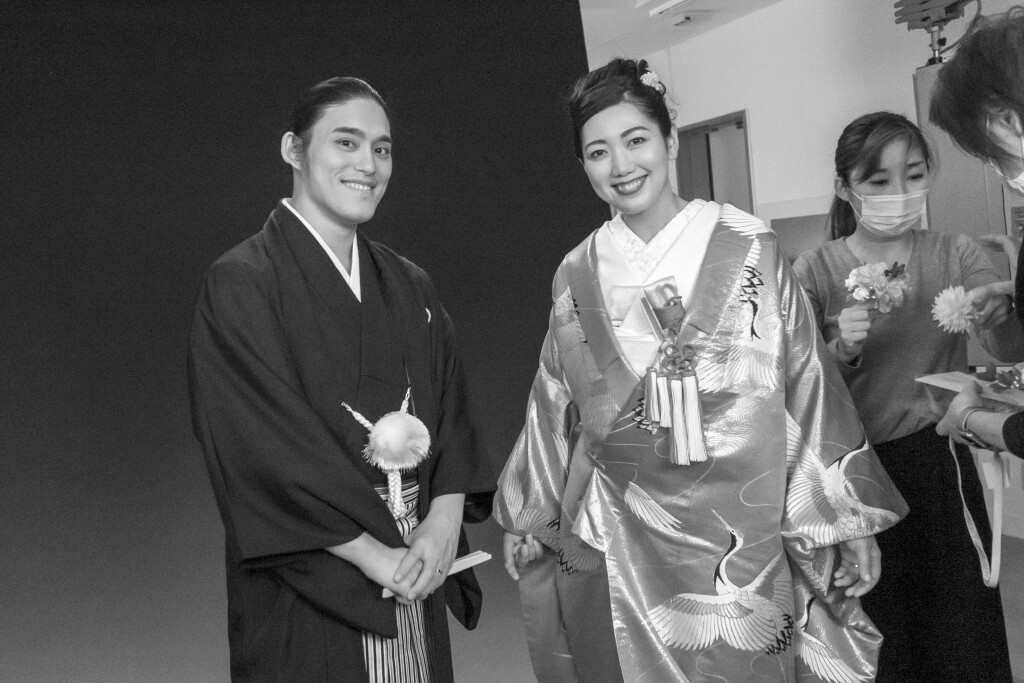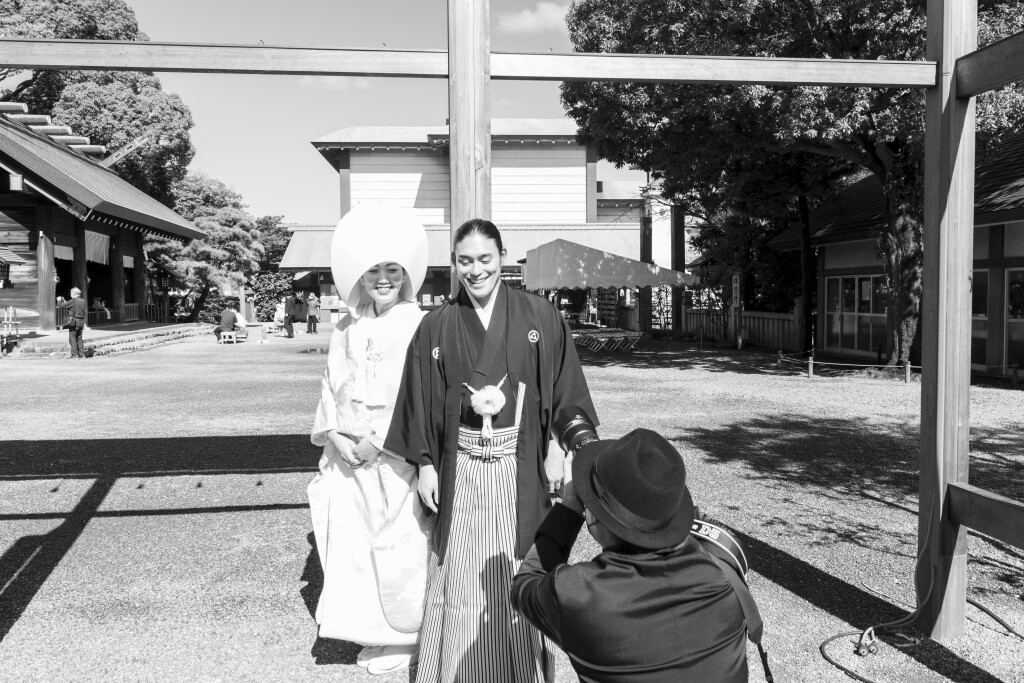The other day, I had the pleasure of photographing the wedding of a friend’s son. It was a traditional Shinto ceremony held at Iseyama Kotaijingu. This historic shrine pays homage to the main guardian deity of Yokohama.
Japanese people incorporate an interesting mix of religions in their lives. When a child is born, they take their newborn to a shrine for their first shrine visit, called omiya mairi. For wedding ceremonies it is common to go to a church. Funerals are generally held at Buddhist temples. Worldwide, this is quite rare. In Japan, however, this is the norm, and in fact, it has become a part of the culture.
 According to a survey by “Hanayume”, a website for finding wedding venues, Shinto wedding ceremonies are outnumbered 4 to 1 compared to church ceremonies. Also, compared to a dress, a kimono is more difficult to wear, requiring a specialist to assist the bride. However, these facts posed no issues to the couple I photographed.
According to a survey by “Hanayume”, a website for finding wedding venues, Shinto wedding ceremonies are outnumbered 4 to 1 compared to church ceremonies. Also, compared to a dress, a kimono is more difficult to wear, requiring a specialist to assist the bride. However, these facts posed no issues to the couple I photographed.
He was well-built and looked dignified in his hakama (the male version of a kimono). The bride was equally stunning in her traditional outfits. They are a picture-perfect couple no matter where you shoot them.
Incidentally, the white cloth worn by the bride is called a wataboshi. I have heard that it carries the same meaning as a veil in a church ceremony. I have also heard that the reason for wearing a wataboshi over the bride’s head is to symbolically protect her from evil and misfortune. As I looked upon the couple with fascination, I felt sure that this groom was capable of protecting his lovely bride without relying on the wataboshi.
I wish them the best of luck in their future together!


